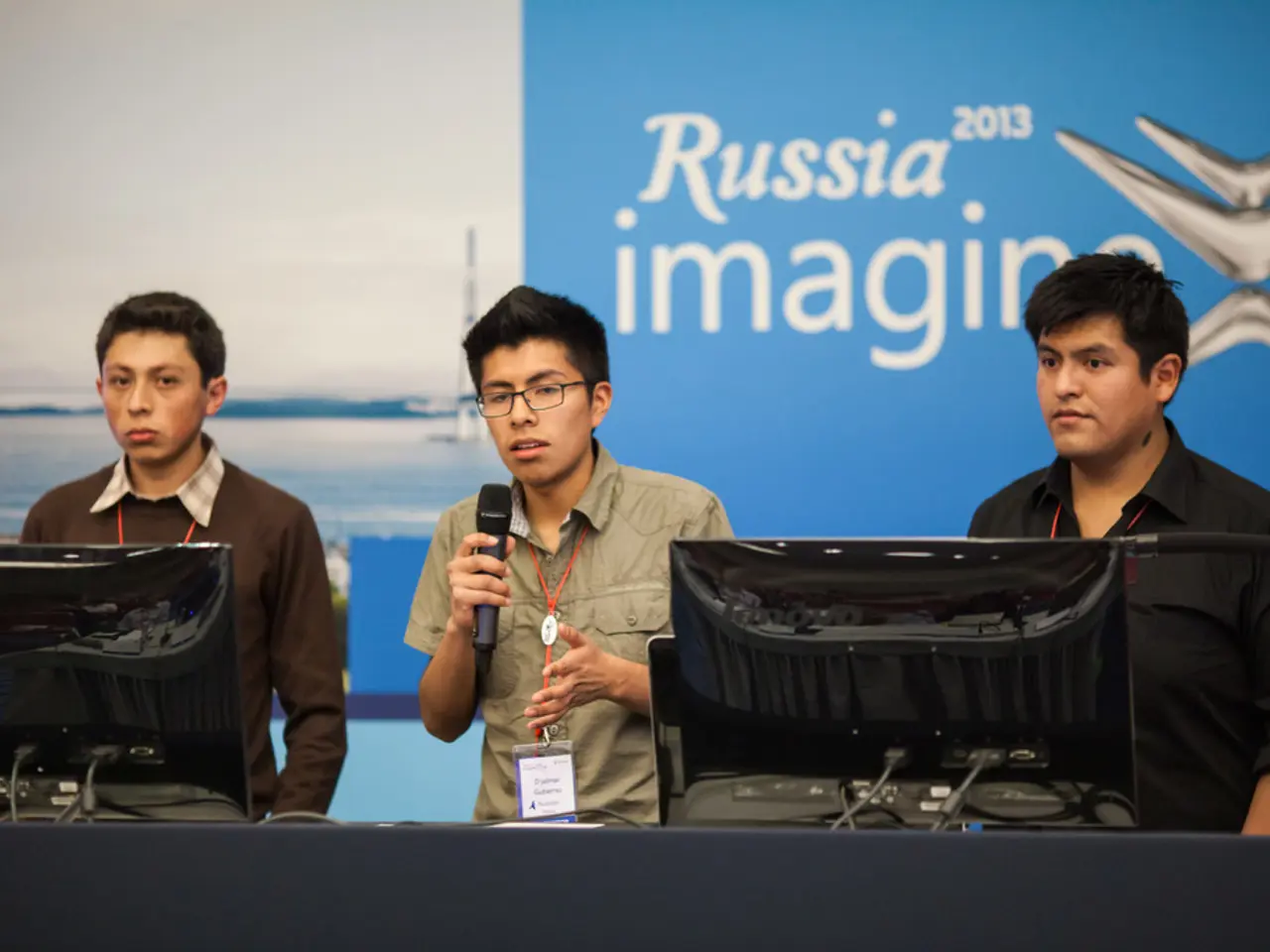Historic encounter between Trump and Putin: shaping the course of war's trajectory
Ukrainians expressed concern on August 15 as they gathered in front of the American embassy in Kiev, fearing exclusion from negotiations between U.S. President Donald Trump and Russian President Vladimir Putin. The protesters demanded specific security guarantees and protective measures for Ukraine, voicing their concerns about being left out of discussions that could shape their nation's future and security.
The protests came ahead of the Alaska summit between Trump and Putin, with the protesters believing that the second meeting, involving Putin, Zelensky, and Trump, would be the most important. Trump had previously stated that the summit would be a first step and that the second meeting would be a continuation of the discussions between him and Putin. However, the President did not specify any details about the location or date of the second meeting.
Trump's statement did not address the protesters' demands for Ukraine's inclusion in the negotiations, nor did it mention any specific security guarantees or protective measures for Ukraine. Instead, Trump emphasized that it was up to Ukrainian President Volodymyr Zelensky "to get it done" in terms of peace negotiations and suggested that European states "have to get involved a little bit."
The protesters were concerned that Putin would use the meeting to push his narrative blaming Ukraine's independence and Western integration for the war, and that Trump might delay or soften sanctions on Russia while pressuring Ukraine to make territorial concessions. These fears were not alleviated by Trump's statement, as it did not reveal any new concerns expressed by the protesters.
One protester, a Ukrainian woman, denounced the situation, stating, "It's not normal, this kind of thing should be negotiated with us. We are the most concerned." She went on to say, "Before negotiating peace, we need real security guarantees. We demand an iron dome to protect the sky of Ukraine."
Despite hopes that the summit might set a cease-fire in Ukraine, no deal was reached, and Russian forces attacked Ukraine during the talks. Trump acknowledged “we didn’t get there” after the meeting and did not secure any commitments from Putin on halting the war. Trump has positioned himself as a peace-seeker but has separated efforts to reset relations with Russia from ending the war, with mixed and limited progress so far.
In conclusion, the core Ukrainian concerns reflected fears of exclusion and being pressured into concessions, while Trump’s public stance was to shift responsibility to Ukraine and Europe, with a cautious and ultimately unsuccessful diplomatic effort in Alaska. The protesters in Kiev continue to demand real security guarantees and protective measures for their nation, hoping for a brighter future and a more inclusive approach to negotiations that will protect Ukraine's sovereignty and independence.
- The protesters in Kiev continued to express concern, believing that the war-and-conflicts discussions between Trump, Putin, and Zelensky might exclude Ukraine and lead to unwanted concessions.
- The ongoing political discourse, including general-news brought about by the war-and-conflicts, has led the protesters to demand iron-clad security guarantees and protective measures for their nation, ensuring Ukraine's sovereignty and independence.








